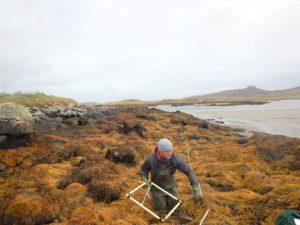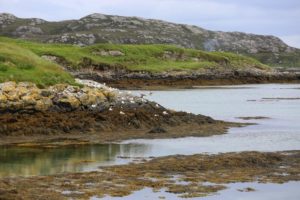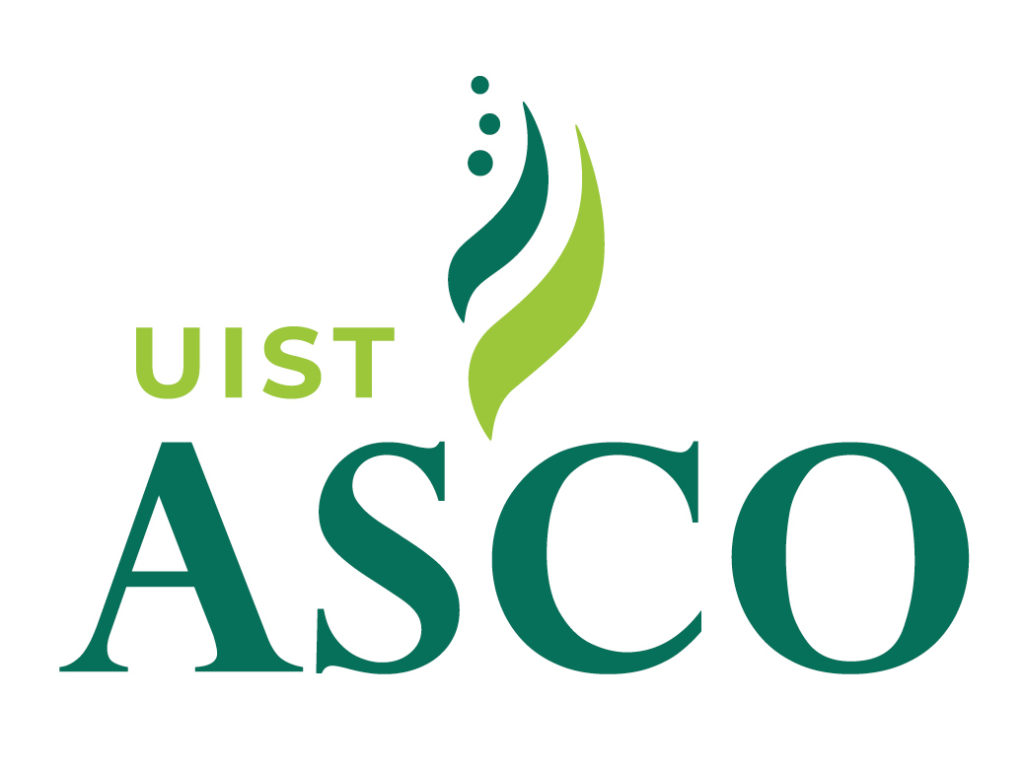With our community so close to the coast, people in the Hebrides regularly cross paths with the wide variety of nautical life. What you may not know is that 50% to 80% of all the life on our planet can be found in marine ecosystems. For businesses and communities that make a living on or near these waters, there’s a calling to ensure the incredible species of these intertidal zones and beyond are respected and protected. That’s true in the Hebrides as it is anywhere on the globe.
As we’ve discussed in the past, the United Nations adopted 17 Sustainable Development Goals (SDGs) to produce a better future for people and the planet. We’ve talked about some of those SDGs in the context of environmental sustainability in Scotland and building economic growth in the Hebrides, but UN SDG 14, the conservation and sustainable use of oceans and marine resources, is of particular interest to Uist Asco and its employees.
A robust marine ecosystem is important not only to our business but to our beliefs as conservationists. Across our company, members of our Resource Science and Resource Management teams have acted as boots on the ground, monitoring seaweed supplies, analysing the health of local ecosystems, and ensuring the safe and sustainable harvest of seaweed.
In the Outer Hebrides, our Resource Scientists coordinate the ongoing assessments of Ascophyllum nodosum, and our Resource Managers work with local harvesters to deliver a sustainable harvest. Their work not only adheres to UN SDG 14 but also contributes to the protection of marine life.
How Our Work Supports UN Sustainable Development Goal #14
The marine space is vital for meeting the needs of an ever-growing global human population. However, the commercial use of this space should always be conducted in a strategic and sustainable way.
This is where Resource Science and Resource Management play important roles in maintaining the balance of economic, social and environmental sustainability during the Ascophyllum nodosum harvest. In Uist, our Resource Scientists set harvest limits to ensure the resource is not over-harvested and that the integrity of the habitat is maintained. Resource Management personnel work every day with local harvesters to cut only the sustainable quantities determined by Resource Science.
How We Use Data and Innovation
 We use well-established field techniques to build a picture of the Ascophyllum nodosum resource and better understand its status. This involves both field and lab work which has led to the peer-reviewed publication of leading research. Availability of ever improving spatial imagery is helping us to build a clearer picture of the health of the resource. We now complement this with use of drones and apps that help us record the collected data.
We use well-established field techniques to build a picture of the Ascophyllum nodosum resource and better understand its status. This involves both field and lab work which has led to the peer-reviewed publication of leading research. Availability of ever improving spatial imagery is helping us to build a clearer picture of the health of the resource. We now complement this with use of drones and apps that help us record the collected data.
Also, our transect methods are uniform throughout Acadian Seaplants and its sister companies and are the key method in the field for gaining an understanding of the Ascophyllum resource and tracking changes over time. This involves laying a 30m transect in the mid-shore area and randomly placing quadrats along its length.
Additionally, this provides data on biomass characteristics such as density and length and can be scaled up to understand what is going on in an area. It can also be modified to assess the presence, or absence, of other species as we use a conservative multi-species management model that isn’t solely based on Ascophyllum indicators.
What We Love About Our Work
Our Resource Scientists, Marine Biologists and Resource Managers have a passion for seaweed. We are particularly proud of their ability to convey Uist Asco’s activities to the Government’s environment bodies and develop relationships with groups like Nature Scot to share in the work of sustainability. More importantly, it has created accountability for environmental sustainability to an extent not previously seen within Uist Asco.
 As part of this, we have implemented seasonal, or permanent, no-take zones in line with the requirements of specific species. This ensures that the harvest can exist sustainably in areas that otherwise thrive from lack of human intervention.
As part of this, we have implemented seasonal, or permanent, no-take zones in line with the requirements of specific species. This ensures that the harvest can exist sustainably in areas that otherwise thrive from lack of human intervention.
Often, our resource science roles require accessing remote sections of shoreline as part of their work. These areas see very little human activity today, but members of our team have talked about how they love stumbling across evidence of human activity in these sites from many years ago. This varies from area to area but the remains of ruined buildings, dilapidated single boat harbours, or ancient rocky tidal fish traps in areas only accessible by boat is always a reminder of a hard, but simpler existence.
The process of supporting UN SDG 14 requires dedication, but for passionate people who love seaweed, nature and their work, it’s a labour of love.
Want to learn more about how we protect life below water and support UN Sustainable Development Goal 14? Read about our sustainable practices.
Learn more about sustainable efforts
Related Articles
4 Sustainable Success Stories in the Hebrides and Scotland — Making Our World a Better Place
Island Prosperity: How Good Jobs Make Life Better in the Outer Hebrides
How Uist Asco Promotes Sustainability: A Conversation about Higher Education with Malcolm Gibson
